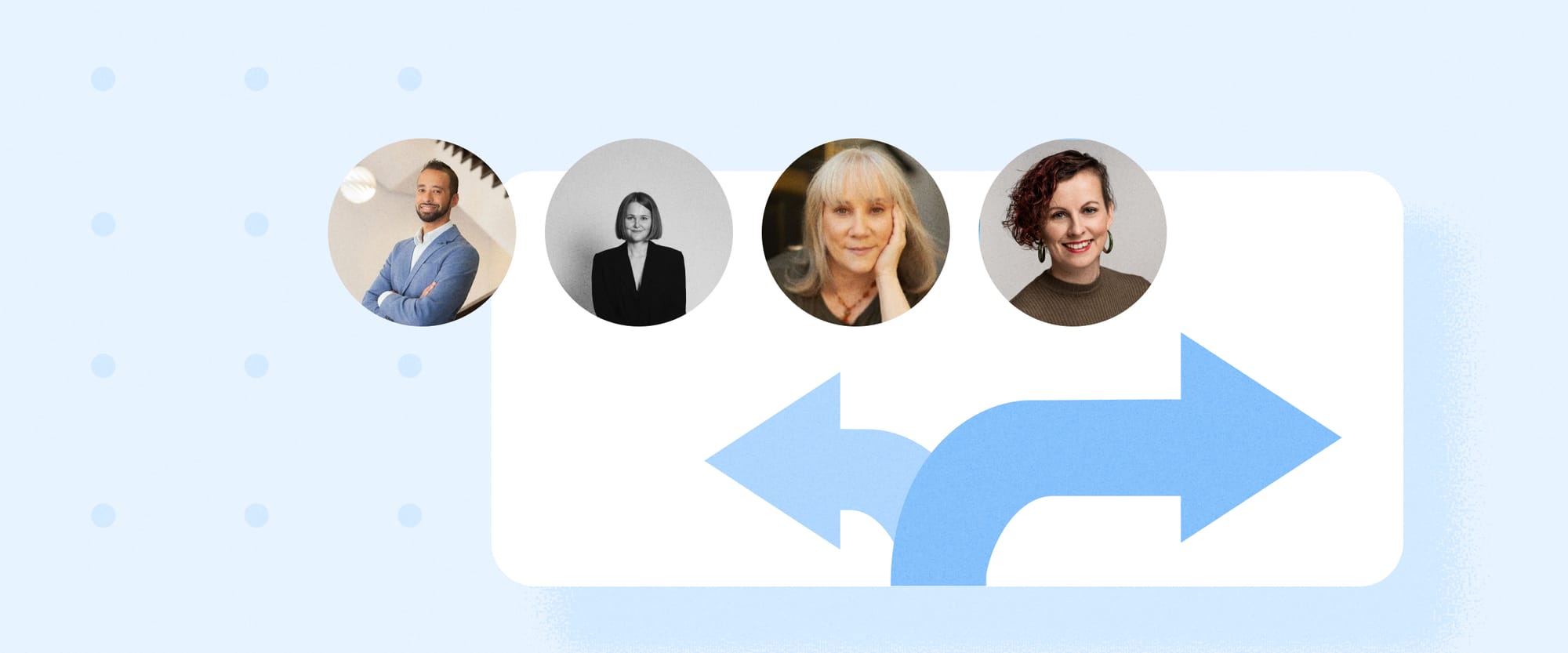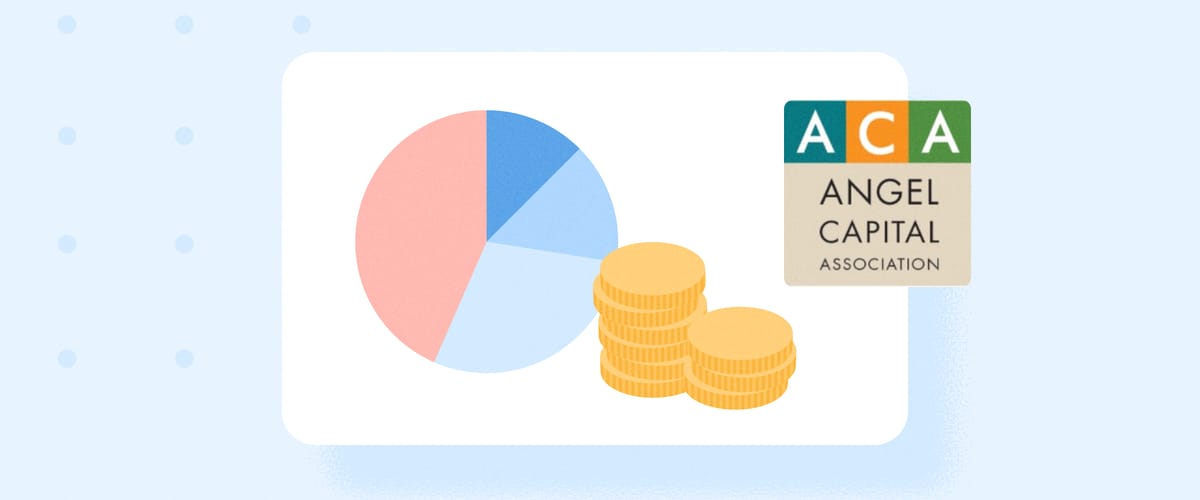In this webinar, moderated by Darja Ogorodnik, we brought together organizational change expert Age Rosenberg, Ashok Kamal (Executive Director at NuFund Venture Group), and Diane Szoke (Director of Operations at Charleston Angel Partners). Together, they shared a deep dive into how theory meets practice when it comes to evolving angel groups.
“No pain, no gain”: why change hurts, and why it’s worth it
“Change is painful, but awareness makes it manageable,” said Age Rosenberg as she opened the session with a powerful summary of two decades of research and fieldwork in change management.
Age emphasized that most organizational change efforts fail because they only address surface-level processes – changing a title, rolling out new software, or issuing new rules – without changing the deeper structure of how work gets done. “If you change only on paper,” she said, “nothing really changes. People revert to old habits.” She illustrated this through a case study of a ministry where managers received new titles but continued working exactly as before for years, simply because no one explained how their responsibilities were supposed to shift.
For successful change, Age advocates mapping out practices in detail: “What do we do? Why do we do it this way? What tools and habits support it?” She introduced the idea of “structural inertia” – the resistance created by tightly interconnected systems and habits. Even if one element changes, everything around it can pull it back to the old state unless broader alignment is addressed.
Her conclusion: “Awareness creates freedom.” Organizations can begin to change effectively by understanding the current situation – how people really work, not just how they’re supposed to.
Reinventing the angel group model: the NuFund example
Ashok Kamal’s story at NuFund Venture Group is a case study in strategic reinvention. When he joined the organization (formerly Tech Coast Angels San Diego) in 2017, it was a classic angel group model: slow, fragmented, and struggling to attract top founders. “We weren’t getting access to the best deals,” Ashok explained. “We had a reputation for moving slowly. People didn’t know what to expect from us, and our operations were stuck in the pen-and-paper era.”
Rather than fight to improve a broken system, NuFund overhauled its entire structure. They launched an annual fund model, pooling capital and making group investment decisions through a democratic process. “Instead of herding 10 individual $25K checks, founders now get a single $350K check from us,” Ashok said. “It’s better for founders and less chaotic for our members.”
Key changes included:
- Creating an annual pooled investment fund
- Professionalizing operations
- Rebranding from “Tech Coast Angels San Diego” to “NuFund Venture Group” to signal the shift
- Embedding technology (including Dealum) to streamline workflows
Despite initial resistance, especially around the name and branding, Kamal stressed the importance of inclusion and transparency. “People ultimately respected the process because their voices were heard,” he said. His advice for any organization navigating change: “Be collaborative, be deliberate, and then be decisive.”
Rebuilding from the ground up: Charleston Angel Partners’ transformation
For Diane Szoke, transformation started with a harsh reality: “We had friction and fog at every touchpoint.” When she joined Charleston Angel Partners in 2021, their platform was barely functional, members couldn’t access basic investment info, and founders had no way to apply or stay connected. “Legacy members weren’t just disengaged – they were completely disconnected.”
Rather than patch the old system, Diane’s team opted for a complete rebuild, using Dealum as the foundation. But, as she made clear, “This wasn’t about digitizing a broken process. It was about creating a better way to operate.”
She approached the transition with a user-first mindset, asking: What do members and founders really need? The new system emphasized transparency, access, and ease of use, designed to reengage members and rebuild trust. The results speak for themselves: 100% engagement from active members and 90% re-engagement from previously inactive legacy members.
Her strategy for overcoming resistance? Start small, roll out changes in phases, and leverage the platform itself to show value. “We didn’t try to force adoption. We built trust by mapping platform benefits to real pain points,” Diane said.
What drives successful change?
During the panel discussion, moderated by Dealum's Darja Ogorodnik, several key themes emerged:
- Involvement is essential. Whether it’s rebranding or changing processes, all three speakers emphasized the importance of involving stakeholders throughout. “Even if people resist, let them be heard. They need to process it,” said Age.
- Deadlines matter. Age also highlighted the need for structured checkpoints. “Deadlines in between help build momentum and prevent chaos at the end.”
- Culture is the foundation. Ashok noted that NuFund’s success wasn’t just about tools or processes, but a shift in mindset. “We became a venture fund because we embraced entrepreneurial thinking. Change starts with culture.”
- Address the emotional side. Diane reminded listeners that change fatigue and fear are real. “We had to acknowledge how people felt, and make the new system genuinely easier to use.”
Looking ahead – what’s next for angel groups?
The final question turned to the future. Both Ashok and Diane see continued evolution ahead:
- More liquidity options. Ashok predicted that angel investors will increasingly seek ways to shorten the return cycle – through secondary markets or pooled funds – to avoid “angel purgatory.”
- Borderless collaboration. Diane highlighted how digital platforms like Dealum enable investors to collaborate across geographies, leading to better diligence and deal access.
- Data-driven decision-making. Both foresee analytics playing a larger role, with Diane noting CAP’s move toward predictive tools to flag red flags early.
- More than money. “Capital alone doesn’t cut it anymore,” said Diane. Angel groups that offer mentorship and strategic support will win out.
Bottom line? Whether your organization is just beginning to modernize or already mid-transformation, change isn’t a checklist – it’s a culture. And the best way to navigate it is with awareness, structure, and a healthy appetite for chaos.
For those looking to start their own transformation, the message from the speakers was clear: don’t just adopt new tools – reimagine how your organization operates.
Rewatch the full webinar below or directly on YouTube.








